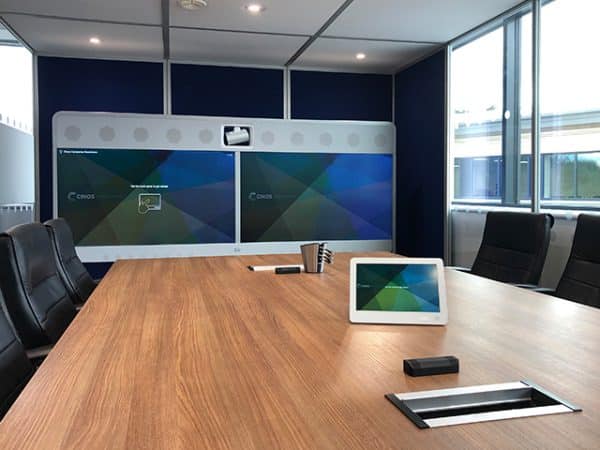The challenges of video conferencing interoperability

It’s a scenario we all know too well and one that has happened in workplaces around the world. As colleagues gather together in the boardroom to start an important video meeting with a client, they’re stopped in their tracks when they realize they are waiting in a Microsoft Teams Room and the client is on Google Meet.
Then the IT department find themselves on the other end of frantic calls and the inevitable question -- 'How do we get this to work?' This can be a frustrating experience, especially for organizations that have invested in expensive hardware or unified communication services.
The reality is that when it comes to audio calling we rely on a universal dialing system but the same can’t be said for video conferencing. In some instances, video conferencing services only connect with endpoints of the same provider. This means inviting other users to a meeting can involve downloading and installing dedicated software or using web-based applications that offer limited functionality.
With the increase in remote working we’ve seen this year, users want a more seamless process without restrictions. Interoperability between clients, companies, and even colleagues has presented many challenges for organizations as they’ve shifted to a work from home model.
So, where do IT teams start?
In a world where we’re seeing an increase in remote working and an uptake of video collaboration platforms, the challenge of connecting devices remains. Even as IT teams look to standardize platforms such as Microsoft Teams, with so much choice on the market, the ability to connect and collaborate with different meeting room systems becomes problematic.
However, some vendors are beginning to work together and many video conferencing platforms now offer a degree of interoperability. At the start of this year, vendors such as Zoom and Cisco enabled integration for Microsoft Teams. Meaning that with the click of a button, Microsoft Teams and Zoom users can join each other’s meetings as guests all while keeping the essential meeting functionality from their individual room systems. Microsoft customers can also enable one-click Zoom meetings from a Microsoft Teams Room and there is also an agreement in place between Microsoft and Cisco.
The key to implementing cohesive video conferencing platforms is understanding the market and what’s on offer. IT teams should narrow down requirements and get to grips with how different services and platforms operate and if they can in fact talk to each other and work together. Another important factor is to choose solutions that are easy to use and don’t require lots of complicated processes that discourage users from adopting them.
Bridging the gap
For IT teams who have already invested in hardware and video conferencing software, there are a few options available. Firstly, utilizing SIP interoperability to overcome vendor-to-vendor incompatibility. This allows users to continue using the current hardware and software to connect with clients or companies using other solutions and providers.
Alternatively, there are various third-party vendors offering bridging services that facilitate interoperability and offer connections between different video conferencing platforms. Solutions such as Pexip simplify interactions across platforms and help IT teams scale their video communications.
The technology allows IT teams to connect each video conferencing platform into a single solution. Supporting tools like Microsoft Teams, Google Meet and Skype for Business in the same workflow as meeting room systems and mobile, desktop or web users. So, the time users spend switching between apps, rooms and solutions is removed to make meetings more productive.
Final thoughts
The bottom line is that users need interoperability and a way that allows everyone to connect and collaborate, regardless of device or video conferencing platform. Sometimes seemingly incompatible video conferencing platforms can talk to each other, they just need a level of interoperability.
By working with vendors that continually look to develop their technology or utilizing bridging services that establish a common ground, IT teams can ensure users have productive video calls regardless of the technology they are using.

Steve Franklin is Executive Director at Cinos -- a leading audio visual & unified communications specialist who has been delivering projects, products and services into the public sector since its formation in 2007.